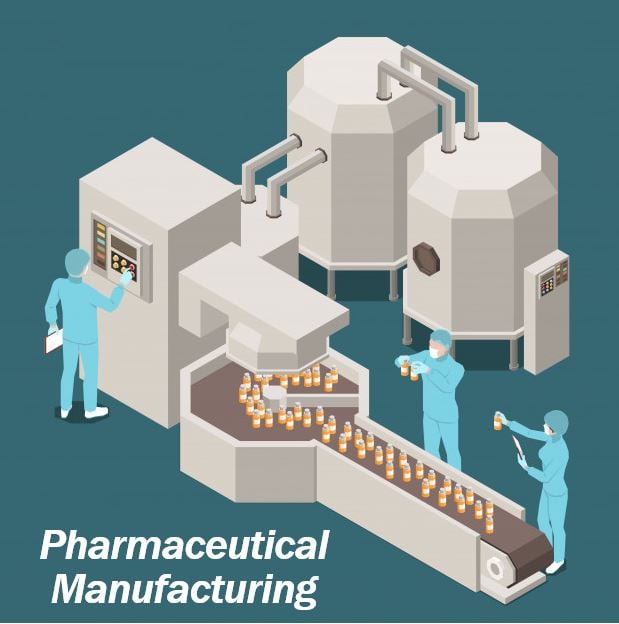Covid-19 has presented many challenges to businesses across the globe who are struggling to solve logistical challenges to move goods from supply chains to meet market demand. However detrimental Covid has been to the steady flow of goods, AI has continued onward, advancing the pharmaceutical industry within the manufacturing facility itself. While more generic production shifts to the U.S., manufacturers have been adapting continuous production processes that speed up production without sacrificing quality.

Until recently, batch production has been the predominant method for assuring quality. When samples are sent out for testing to another location, bottlenecking the workflow, production is limited. With continuous manufacturing processes, these steps are eliminated. The result is lower labor costs, decreased cost per unit, and increased production rate with greater consistency in quality.
Other sectors have long been using continuous production methods, but due to hefty compliance requirements, it has taken pharma longer to get there. It’s a time when any argument against transitioning to the newer technology is overcome by the benefits of self-sufficiency and reduced costs.
The cost of new technology is often the barrier to change. Upgrading equipment to incorporate computer- controlled flow reactors, tank reactors, granulators, coaters, mixers, dryers, and analysis technologies is an investment big pharma companies are more likely to adapt first.
An Important Lesson
Stockpiling for run of the mill emergencies normally entails ordering additional raw materials or placing more frequent orders. None could have prepared the world for the ramifications of offshoring important pharmaceutical ingredients. At a time when production came to a standstill for fear of transmitting a virus, with no local source of vital medical materials, many countries became cognizant of their vulnerabilities.
To facilitate the implementation of newer technology, companies have been assisted by grants offered by regulatory bodies and institutes. While costly to install, the technologies open access to future growth as nationally produced raw materials increase in demand.
U.S. Mandated Pharmaceutical Production
The Trump administrations recent orders compel the FDA to list essential medications, medical countermeasure and critical inputs deemed medically necessary to have available in the United States. The FDA has yet to release the list of these ingredients mandated necessary for patient needs.
- Essential medicines are loosely defined as those required for patients residing in the United States.
- MCMs are those products required to satisfy OSHA mandated safety protocol for PPE equipment, biologics, and pharmaceuticals needed to treat people afflicted by a pandemic or epidemic.
- Critical inputs refer to raw materials and pharmaceuticals used in manufacturing of either essential medicines or MCMs.
Although indicated by the current virus situation, these terms are quite broad and depending on interpretation by the FDA, can include a vast number of medications, far and beyond the treatment of viral or bacterial outbreaks.
Onshoring the production of many raw materials is likely to increase their price. However, the transition to continuous manufacturing processes offers companies a plan of attack to meet high demand while driving down costs. Working with inventory software designed to log all these manufacturing processes will ensure smooth inventory control, tracking and freshness of finished product.
The FDA does have flexibility when the costs of onshoring could increase costs by over 25%. This may very well be the case where medications are produced via batch processing methods and makes a strong case for transitioning to modern AI controlled processes.
Where regulations stand to slow or prohibit sufficient production, the FDA has been tasked with evaluating regulations and accelerating approvals to ensure manufacturers are able to proceed with production of said essential medications. Where the EPA is involved for facility approval, they have been ordered to streamline approval processes.
The FDA’s deadline for public announcement of their guidelines is November 4th, landing the outcome of the pharmaceutical production on the upcoming administration’s shoulders – and all the potential litigation by opposing big pharma companies who have been happily been manufacturing abroad.
Interesting related article: “What is Good Manufacturing Practice?”

